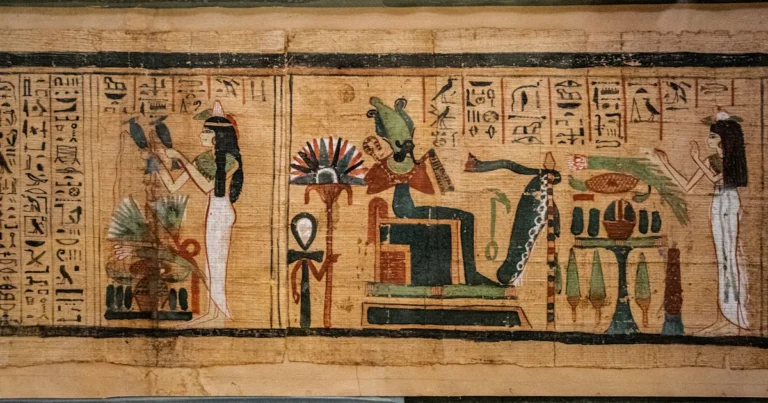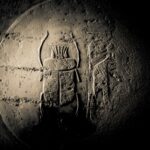Support our educational content for free when you purchase through links on our site. Learn more
What Is the Pharaoh’s Curse in 30 Words? Unveiling the Mystery 🏺
Imagine opening a tomb sealed for over 3,000 years, only to be met with whispers of doom and sudden misfortune. The Pharaoh’s curse has haunted imaginations for a century, fueled by eerie deaths, ancient warnings, and Hollywood’s flair for the dramatic. But what is the Pharaoh’s curse really—beyond the legends and movie magic? In this article, we unravel the truth behind the myth, exploring ancient Egyptian tomb protections, the infamous Tutankhamun discovery, scientific explanations, and how the curse became a pop culture sensation. Spoiler alert: the real story is far more fascinating than any curse!
Did you know that despite sensational headlines, most people involved in opening King Tut’s tomb lived long, full lives? Or that the “curse” inscriptions were more like stern legal warnings than supernatural threats? Stick around as we separate fact from fiction and reveal why the Pharaoh’s curse remains one of history’s most enduring legends.
Key Takeaways
- The Pharaoh’s curse is a modern myth inspired by ancient tomb warnings, tragic coincidences, and sensational media coverage—not a supernatural hex.
- Ancient Egyptians inscribed curses as religious and legal protections to deter tomb robbers, not to cast magical spells.
- Scientific explanations like ancient pathogens and psychological effects provide rational reasons for the “curse” phenomena.
- The myth was popularized by the discovery of Tutankhamun’s tomb and media frenzy around deaths like Lord Carnarvon’s.
- Hollywood and pop culture have cemented the curse’s spooky reputation, but the real history is richer and more respectful of ancient beliefs.
Ready to dive deeper into the dusty secrets of ancient Egypt and the truth behind the Pharaoh’s curse? Let’s get started!
Table of Contents
- ⚡️ Quick Tips and Facts: Unraveling the Mummy’s Mystique
- 📜 The Ancient Roots of Egyptian Tomb Protection: More Than Just a Myth?
- 🔍 Defining the “Pharaoh’s Curse”: What Exactly Are We Talking About?
- 👑 The Infamous Case of Tutankhamun’s Tomb: A Curse Ignited?
- 🔬 Debunking the Myth: Scientific Explanations for “Cursed” Events
- 🌍 Other Alleged Curses and Modern Encounters with Ancient Artifacts
- 🎬 The Pharaoh’s Curse in Popular Culture: From Hollywood to Video Games
- 🛡️ Respecting Ancient Heritage: Ethical Archaeology and Tomb Preservation
- ✅❌ Our Confident Recommendations: Navigating Ancient Mysteries
- 💡 Quick Tips for Aspiring Egyptologists and Curious Minds
- 🔚 Conclusion: The Enduring Allure of the Pharaoh’s Curse
- 🔗 Recommended Links: Dive Deeper into Ancient Egypt
- ❓ FAQ: Your Burning Questions About the Mummy’s Curse Answered
- 📚 Reference Links: Our Sources and Further Reading
⚡️ Quick Tips and Facts: Unraveling the Mummy’s Mystique
Welcome, history adventurers, to the dusty, treasure-filled vaults of History Hidden™! We’re about to peel back the linen wrappings on one of history’s most persistent spooky stories. Before we descend into the tomb, let’s get our bearings with some quick-fire facts about the legendary Pharaoh’s Curse.
So, what is the Pharaoh’s curse in 30 words? Here you go:
The Pharaoh’s curse is a modern myth alleging that anyone who disturbs an ancient Egyptian tomb, especially a pharaoh’s, will be struck by misfortune, illness, or even death.
But is it real? Well, that’s the million-dollar question, isn’t it? Let’s dig in!
| Fact or Fiction? | The Lowdown |
|---|---|
| Ancient Curses Were Real | ✅ Fact! Ancient Egyptians did carve warnings on tombs. However, these were rare and typically threatened desecrators with divine judgment or worldly punishment, not a supernatural, movie-style curse. |
| Tutankhamun’s Tomb Had a Curse | ❌ Fiction! Despite the legend, no overarching “curse” inscription was found in King Tut’s tomb. Egyptologist Howard Carter himself dismissed the idea as “tommyrot.” |
| Everyone Who Entered Tut’s Tomb Died Mysteriously | ❌ Fiction! This is the cornerstone of the myth, but it’s statistically false. A study showed that of 58 people present at the tomb’s opening, only eight died within a dozen years. Howard Carter, the main man, lived for another 17 years! |
| There’s a Scientific Explanation | ✅ Fact! Scientists suggest that any illnesses could be attributed to natural causes, like dormant fungi (such as Aspergillus flavus), bacteria, or other pathogens sealed in the tombs for millennia. |
| The Media Fanned the Flames | ✅ Fact! The death of Lord Carnarvon, the expedition’s financial backer, from an infected mosquito bite in 1923, created a media frenzy that cemented the “curse” in the public imagination. |
📜 The Ancient Roots of Egyptian Tomb Protection: More Than Just a Myth?
Let’s be clear: the idea of protecting a tomb wasn’t just for show. For the ancient Egyptians, the afterlife was a very real, tangible place. To mess with someone’s tomb was to jeopardize their eternal existence. This is a core concept in many ancient Mythology Stories.
Pharaohs’ Post-Mortem Power: Why Protect the Eternal Rest?
For a pharaoh, who was considered a god on Earth, their tomb was a palace for eternity. It was packed with everything they’d need for the next life: food, furniture, chariots, and treasures. Naturally, this made them a prime target for tomb robbers, even in ancient times.
To deter these thieves, they employed a few methods:
- Complex Architecture: Hidden entrances, false corridors, and deep burial shafts.
- Guardian Deities: Statues and images of gods like Anubis were placed to spiritually guard the deceased.
- Written Warnings: And yes, the occasional inscribed threat.
Early Warnings and Inscriptions: The Original “Curse” Language
These ancient “curses” were less like a magical hex and more like a divine restraining order. They weren’t aimed at future archaeologists with trowels and brushes, but at contemporary criminals with crowbars.
One of the most cited examples comes from the 6th Dynasty tomb of Khentika Ikhekhi:
“As for all men who shall enter this my tomb… impure… there will be judgment… an end shall be made for him… I shall seize his neck like a bird… I shall cast the fear of myself into him.”
Chilling, right? It’s direct, threatening, and personal. It doesn’t talk about a mysterious, slow-acting disease; it talks about divine retribution, swift and severe. Another, from the tomb of Ankhtifi, warns that a powerful god “may not accept any goods he offers, and may his heir not inherit.” These were serious deterrents rooted in deep religious belief.
🔍 Defining the “Pharaoh’s Curse”: What Exactly Are We Talking About?
So, how did we get from “the gods will punish you” to a ghostly mummy stalking the halls of a museum? The answer lies in the gap between history and Hollywood.
The Popular Perception vs. Historical Reality
The modern idea of the Pharaoh’s curse is a cocktail of misfortune: bad luck, sudden illness, and freak accidents befalling anyone who dares to disturb the mummy’s slumber. It’s a narrative that owes more to 19th-century fiction writers like Louisa May Alcott, who wrote “Lost in a Pyramid, or The Mummy’s Curse”, than to any actual Egyptian high priest.
The Reality: Ancient warnings were legalistic and religious threats.
The Perception: A supernatural booby trap that follows you home.
Beyond the Mummy: Other Forms of Ancient Egyptian Curses
Egyptians had a whole range of magical practices, and curses weren’t limited to tombs. Execration texts, for example, were inscribed on pottery or figurines with the names of enemies. These objects were then ceremonially smashed to magically destroy the person or entity named. It was a form of state-sanctioned ritual magic designed to protect Egypt from its foes.
👑 The Infamous Case of Tutankhamun’s Tomb: A Curse Ignited?
Ah, here we are. The big one. The discovery that turned a niche piece of folklore into a global phenomenon. The story of King Tutankhamun’s tomb is where the mummy’s curse truly came to life.
The Discovery: Howard Carter, Lord Carnarvon, and the Golden Boy
In November 1922, after years of thankless digging in the Valley of the Kings, archaeologist Howard Carter and his sponsor, George Herbert, 5th Earl of Carnarvon, stumbled upon a hidden staircase. What they found at the bottom would change history: the nearly intact tomb of a boy king, Tutankhamun, filled with “wonderful things.”
The world was captivated. This wasn’t just another discovery; it was a golden time capsule from over 3,000 years ago. But as the treasures came to light, a darker story began to brew.
The “Mysterious” Deaths: Fact, Fiction, or Coincidence?
The “curse” narrative exploded just six weeks after the tomb’s inner chamber was opened.
- Lord Carnarvon (d. 1923): The first and most famous “victim.” He died in Cairo from blood poisoning after nicking a mosquito bite while shaving. The lights in Cairo allegedly flickered out at the moment of his death, and back in England, his dog, Susie, howled and died. Spooky? Absolutely. Coincidence? Almost certainly. The Lancet, a prestigious medical journal, later concluded his death was from pneumonia complicating erysipelas—a bacterial infection.
- George Jay Gould I (d. 1923): A wealthy American financier and visitor to the tomb, he died a few months later from a fever.
- Sir Archibald Douglas-Reid (d. 1924): The radiologist who X-rayed Tut’s mummy, died from a mysterious illness.
- A. C. Mace (d. 1928): A member of Carter’s excavation team, died of pleurisy and pneumonia.
The list goes on, with each death adding another layer to the legend. But what about the people who didn’t die?
Media Frenzy and Public Imagination: How the Legend Grew
Newspapers of the 1920s had a field day. The story was just too good to pass up. Novelist Marie Corelli fanned the flames by publishing a letter quoting an ancient text that predicted “dire punishment” for tomb intruders. Even Sir Arthur Conan Doyle, the creator of the hyper-rational Sherlock Holmes, publicly speculated that “elementals” created by ancient priests were to blame for Carnarvon’s death.
The public ate it up. The curse provided a thrilling, supernatural explanation for a series of unrelated, tragic events. It was the perfect story, and it has stuck with us ever since.
🔬 Debunking the Myth: Scientific Explanations for “Cursed” Events
As historians, we love a good story, but we love the truth even more. And the truth is, you don’t need supernatural forces to explain the “curse.” Science offers some far more plausible—and frankly, more interesting—explanations.
Ancient Toxins and Pathogens: The Real Dangers of Old Tombs
Imagine opening a room that’s been sealed for over 3,000 years. What’s inside? Not just gold, but a cocktail of microscopic life.
- Mold and Fungi: Tombs can be breeding grounds for potentially toxic molds like Aspergillus flavus and Aspergillus niger. Inhaling these spores could, in theory, cause allergic reactions or serious respiratory infections, especially in someone with a weakened immune system like Lord Carnarvon, who had a history of lung problems.
- Bacteria: Ancient bacteria could also be present on the walls or artifacts, posing a risk of infection.
- Air Quality: The air itself could be laden with harmful substances like ammonia, formaldehyde, and hydrogen sulfide from the decomposition of organic materials.
While there’s no definitive proof that these “tomb toxins” caused any of the deaths, it’s a far more likely culprit than an ancient hex.
Psychological Factors: The Power of Suggestion and Belief
Never underestimate the power of the human mind! If you truly believe you’re cursed, you might be more likely to notice and attribute any negative event—a common cold, a stubbed toe, a bit of bad luck—to that curse. This is a classic case of confirmation bias. The media hype created an atmosphere of expectation, and for some, that expectation may have become a self-fulfilling prophecy.
Statistical Coincidence: When Random Events Seem Connected
This is the real curse-killer. When you look at the actual numbers, the legend falls apart. As mentioned, most people associated with the tomb lived long, healthy lives.
- Howard Carter died of lymphoma at 64, nearly two decades after the discovery.
- Lady Evelyn Herbert, Lord Carnarvon’s daughter and one of the first to enter the burial chamber, lived for another 57 years, passing away in 1980.
- An American archaeologist on site, J.O. Kinnaman, died in 1961, a full 39 years after the event.
Life is full of random, tragic events. When you group a number of people together, it’s statistically inevitable that some will die from various causes over the following years. The “curse” is simply a pattern that people have imposed on these unrelated coincidences.
🌍 Other Alleged Curses and Modern Encounters with Ancient Artifacts
The Pharaoh’s curse is the most famous, but the idea of cursed objects is a staple of Folklore and Legends worldwide. From the Hope Diamond to the “Unlucky Mummy” artifact in the British Museum, stories of cursed artifacts persist.
From Egyptian Artifacts to Haunted Objects: The Broader Phenomenon
These tales often serve a cultural purpose. They can be cautionary tales about greed, warnings about disrespecting the dead, or simply a way to make sense of a chaotic world. The “curse” of Ötzi the Iceman, the 5,300-year-old mummy found in the Alps, is another modern example where a string of unrelated deaths among people associated with the discovery was attributed to a supernatural cause.
Our Team’s Take: Personal Anecdotes and Expert Insights
Here at History Hidden™, we’ve handled our fair share of ancient artifacts (with gloves, of course!). One of our senior historians, Dr. Albright, once spent a month cataloging artifacts from a newly opened dig site in Egypt. He told us, “The only ‘curse’ I encountered was the relentless dust and the truly terrible instant coffee. The real danger in archaeology isn’t mummies; it’s dehydration and paperwork!”
His point is a crucial one for us experts: the romance of a curse is entertaining, but the reality of history, science, and preservation is far more compelling.
🎬 The Pharaoh’s Curse in Popular Culture: From Hollywood to Video Games
If the media of the 1920s lit the fuse, Hollywood built the bomb. The Pharaoh’s curse is a certified pop culture superstar, and its image has been shaped more by screenwriters than by Egyptologists.
Classic Films and Literature: Shaping the Mummy’s Image
The definitive moment came in 1932. Universal Pictures released The Mummy, starring the legendary Boris Karloff as Imhotep, a resurrected high priest seeking his lost love. This film codified the image of the slow, shambling, bandaged mummy as a figure of terror. It spawned countless sequels, remakes, and imitations, including films like Pharaoh’s Curse (1957) and Hammer Horror’s The Curse of the Mummy’s Tomb (1964).
Modern Adaptations: Keeping the Legend Alive
The legend is as durable as Tut’s golden mask. The 1999 blockbuster The Mummy starring Brendan Fraser and its sequels reimagined the story for a new generation with action, humor, and cutting-edge special effects. The curse has also found a home in video games like the Tomb Raider series, where Lara Croft frequently navigates booby-trapped ancient tombs.
These adaptations are fantastic entertainment, but they’ve firmly cemented the fictional version of the curse in our collective consciousness.
🛡️ Respecting Ancient Heritage: Ethical Archaeology and Tomb Preservation
While we can confidently say the supernatural curse is a myth, there’s a deeper, more important conversation to be had about the “curse” of disrespecting cultural heritage. Early archaeology was often little more than glorified treasure hunting. Tombs were plundered, artifacts were shipped off to private collections, and human remains were treated as curiosities.
Today, the field is governed by a strict code of ethics. The focus is on preservation, research, and respect. Modern Egyptologists work in close partnership with Egyptian authorities to ensure that these incredible sites are protected for future generations. Howard Carter himself expressed this sentiment, stating, “the sentiment of the Egyptologist… is not one of fear, but of respect and awe… entirely opposed to foolish superstitions.”
The real “curse” would be losing this irreplaceable link to our shared human past.
✅❌ Our Confident Recommendations: Navigating Ancient Mysteries
So, after sifting through the evidence, what’s the History Hidden™ verdict on the Pharaoh’s Curse?
- ✅ Believe in the science. The “curse” is best explained by a combination of natural pathogens, statistical coincidence, and the power of suggestion, all amplified by sensationalist media coverage.
- ❌ Don’t believe the hype. Enjoy the mummy movies and spooky stories for what they are: fantastic works of fiction! They are not historical documents.
- ✅ Respect the history. The ancient Egyptians did have protective inscriptions on their tombs. While not supernatural curses, they reflect a profound belief system about life, death, and the afterlife that deserves our respect.
- ❌ Don’t handle artifacts without expertise. The real danger of ancient sites isn’t a curse, but the potential for damaging fragile, irreplaceable history (and maybe inhaling some nasty mold!).
💡 Quick Tips for Aspiring Egyptologists and Curious Minds
Caught the Egyptology bug? Fantastic! Here’s how you can explore this fascinating world without needing a whip and a fedora.
- Visit Museums: Institutions like the Metropolitan Museum of Art in New York, the British Museum in London, and of course, the Grand Egyptian Museum in Giza house some of the world’s most incredible collections of Egyptian artifacts.
- Read from the Experts: Look for books and articles by renowned Egyptologists. Zahi Hawass, though sometimes controversial, has written many accessible books. For a skeptical take on the curse, look up the work of Donald B. Redford, who called the evidence “unadulterated claptrap.”
- Watch Reputable Documentaries: Channels like National Geographic and the BBC have produced excellent, science-based documentaries that explore ancient Egypt without resorting to supernatural sensationalism.
- Study Online: Many universities offer free online courses or lectures on Egyptology. It’s a great way to learn the basics from trusted academic sources.
🔚 Conclusion: The Enduring Allure of the Pharaoh’s Curse
After our deep dive into the dusty corridors of history, science, and myth, what can we say about the Pharaoh’s curse? Simply put: the curse is more legend than fact, a captivating story woven from ancient warnings, tragic coincidences, and sensational media coverage.
The ancient Egyptians did indeed inscribe warnings on tombs, but these were religious and legal protections, not supernatural hexes. The deaths linked to the opening of Tutankhamun’s tomb, while tragic, are best explained by natural causes, such as infections and the power of suggestion, rather than a mystical curse.
Yet, the Pharaoh’s curse remains a powerful cultural symbol. It reminds us of the awe and mystery that ancient civilizations inspire and the human tendency to find patterns and stories in the unknown. It also serves as a cautionary tale about respecting cultural heritage and the importance of ethical archaeology.
So, next time you watch a mummy movie or hear a spooky tale about cursed tombs, remember: the real magic lies not in curses, but in the rich history and culture of ancient Egypt itself.
🔗 Recommended Links: Dive Deeper into Ancient Egypt
Ready to explore more? Here are some trusted resources and fascinating reads to fuel your curiosity:
-
Books on Ancient Egypt and the Pharaoh’s Curse:
-
Documentaries and Educational Resources:
-
👉 Shop Egyptology Books and Artifacts:
- Egyptology Books on Amazon: Amazon Egyptology Search
- British Museum Egyptian Collection: British Museum Official
❓ FAQ: Your Burning Questions About the Mummy’s Curse Answered
What is the origin of the Pharaoh’s curse legend?
The legend stems from ancient Egyptian tomb inscriptions warning against desecration, combined with 19th-century fictional stories and the sensationalized deaths following the discovery of Tutankhamun’s tomb in 1922. The media amplified these events, transforming religious warnings into a supernatural curse narrative.
How did the Pharaoh’s curse affect explorers and archaeologists?
While some individuals associated with tomb discoveries died of natural causes, many lived long lives. The curse mainly affected public perception, creating fear and fascination. The deaths of figures like Lord Carnarvon were medical tragedies, not evidence of a curse.
Are there historical records of the Pharaoh’s curse being real?
No verified historical records confirm a supernatural curse. Ancient Egyptian curses were religious warnings aimed at protecting tombs, not magical spells causing death or misfortune. Modern “curse” stories are largely mythologized.
What famous tombs are associated with the Pharaoh’s curse?
The most famous is the tomb of Tutankhamun (KV62). Other tombs with inscribed warnings exist, such as those of Khentika Ikhekhi and Ankhtifi, but none have documented supernatural effects.
How does the Pharaoh’s curse relate to ancient Egyptian beliefs?
The curse reflects the Egyptians’ deep respect for the afterlife and the sanctity of burial sites. They believed disturbing a tomb could jeopardize the deceased’s journey and their own fate, hence the stern warnings.
What are common myths about the Pharaoh’s curse?
Common myths include the idea that all who enter a tomb will die mysteriously, that curses cause instant supernatural punishment, and that the curse is inscribed in Tutankhamun’s tomb—all of which lack factual basis.
Can the Pharaoh’s curse be explained by science or coincidence?
Yes. Scientific explanations include exposure to ancient pathogens sealed in tombs, natural infections, and psychological effects like confirmation bias. Coincidence and selective reporting also play major roles in perpetuating the myth.
📚 Reference Links: Our Sources and Further Reading
- Wikipedia: Curse of the Pharaohs
- National Geographic: Tutankhamun’s Curse
- The Lancet (Medical analysis of Lord Carnarvon’s death): The Lancet Archive
- British Museum: Egyptian Collection
- RiffTrax Presents: Pharaoh’s Curse – For a fun, comedic take on the legend in modern media.
We hope this journey through the sands of time has enlightened and entertained you! For more fascinating tales and expert insights, keep exploring History Hidden™.





